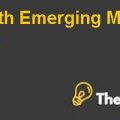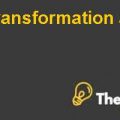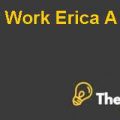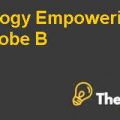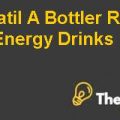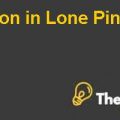Moly Corporation Case Study Analysis
Moreover, the company experienced higher debt to equity ratio, the significant decline in the company’s share price, 85% decline in the prices of rare earth minerals affecting the funding strategy of the business. In addition, the organization suffered a loss of $69.7 million in 2012 due to higher investments related to the restructuring of the mountain press mine and the significant increase in interest expense as a result of using debt finance to fund project’s expansion. On the other hand, the firm required additional finance to support the project’s development but was concerned whether the company will be able to raise finance or not considering declining profits and the significant debt to equity ratio.
Analysis:
In order to support the project’s development, the organization required additional investment of $289 million in 2012, $25 million in 2013, $45 million in 2012 for projects at other facilities, $230 million for redeeming convertible debt and $33.2 to repay other obligations. In order to raise finance, the organization considered three options which included five year senior notes of $350 million with a CCC rating, $350 million convertible notes and common stock from $100 million to $350 million.
In order to assess the viability of the project and suggestthe appropriate source of finance, three options are evaluated on the basis of their finance costs. The five year senior note with an amount of $350 million has a cost of debt of 10% which is its coupon rate. As these debts are irredeemable, the organization will need to pay fixed interest payment of 10% annually. The cost of debt of convertible notes is determined using the internal rate of return approach. The convertible notes has an estimated cost of debt of 4% assuming the market value of a share is 100, the organization will need to pay annual after tax interest of $4.2 considering the coupon rate of 6% and assuming that each holder will convert 10 shares at the end of the maturity period at a price of $13.8 per share. Similarly, raising finance by issuing common stock has an estimated cost of equity of 2.3% which is calculated on the assumption that market risk premium is 0.3%, using five year risk free rate of 0.67% and using equity beta of 2.33.
In order to assess the viability of the project, the net present value of free cash flows of the years 2013-2017 has been determined using a discount rate of 5%.The 5% discount rate has been calculatedon the assumptions that the cost of debt is the ten year corporate bond yield at “CCC” credit rating which is assigned to the existing bonds of the organization and the risk premium is 0.3%. In addition, in determining the cost of debt and the cost of equity, the 47% debt to equity ratio based on market values is used. On the other hand, the future cash flows of the project are estimated on the basis that production will increase to 40,000 tons in thousands in the year 2014-2017 and using different growth rates for revenue (Annexure, Excel).It is estimated that the net present value of free cash flows will be $316.1 million (See Appendix 2)
The organization has already invested $1610 million in the project as $110 million were invested in acquiring Santoku America, AS Silmet and $1.5 billion were invested in acquiring Neo Technologies. The investment required in acquisition of these organizations was funded through theissue of preferred stock of $180 million, convertible senior notes of $230 million, a secondary share offering of 586.5 million and senior secured notes amounting $650 million. In addition, $622.2 million additional investment will be required in order to support the project’s development. Therefore, it is estimated that the project will require a total investment of $2232.2 million. (See Appendix 2)
Recommendation:
The estimated positive net present value of the free cash flows suggests that the project is financially viable and significant growth in revenue and profits will be achieved. Therefore, it will be recommended to the company to support the project’s development and investment required by raising finance through issuing common shares to the public as it has a low cost of finance as compared to the other two options. Similarly, it is likely that the organization’s share price will increase in the near future considering, the investor’s confidence in the business will increase as a result of significant revenues and profits earned by the organization. On the other hand, the company’s 47% debt to equity ratio is significantly high as compared to 0% debt to equity ratio of other rare earth mining firms.Similarly, the company has been assigned poor credit rating i.e. “CCC” which makes raising finance through debt difficult for the company. Therefore, raising additional finance required through convertible debt or bonds will not be afeasible option for the company..............................
This is just a sample partical work. Please place the order on the website to get your own originally done case solution.

